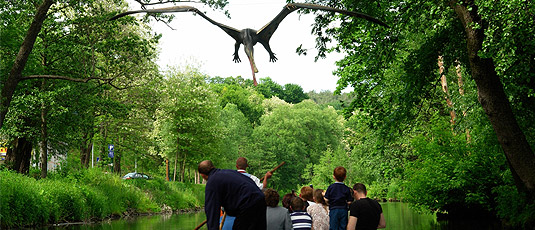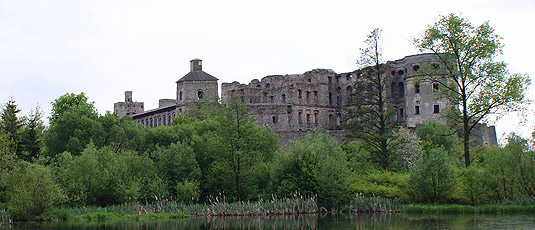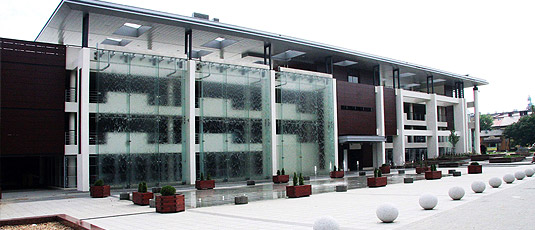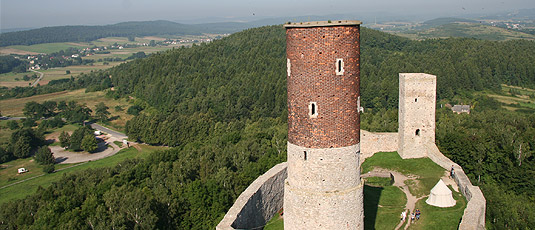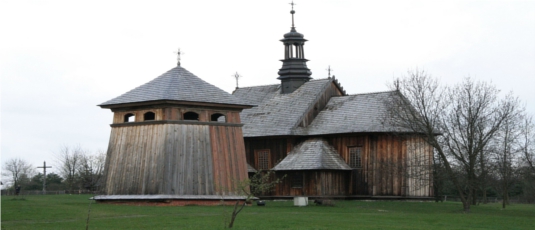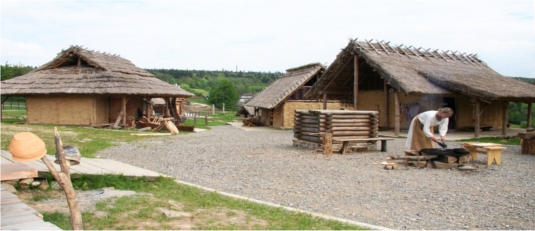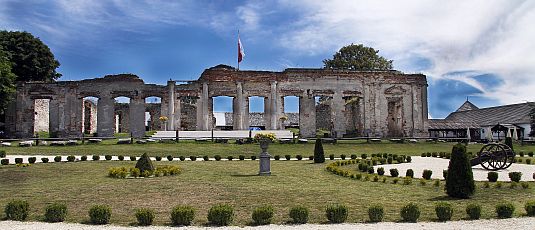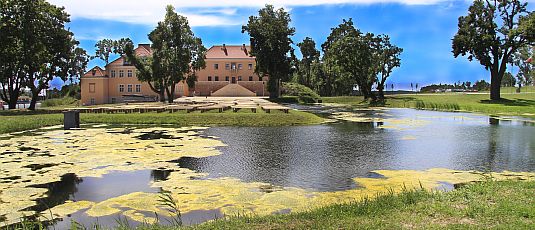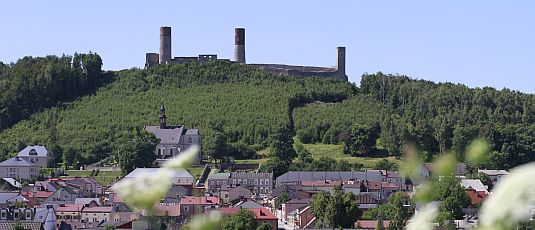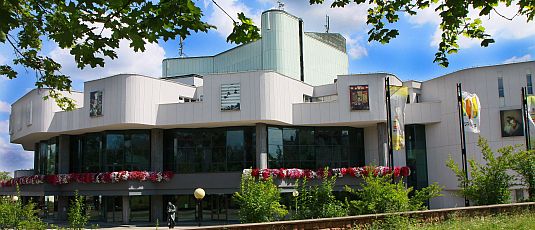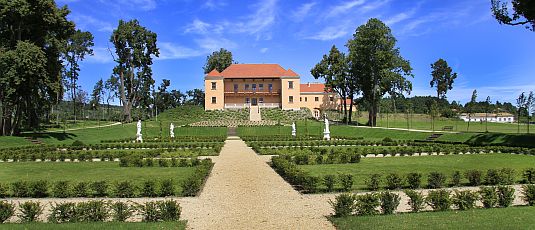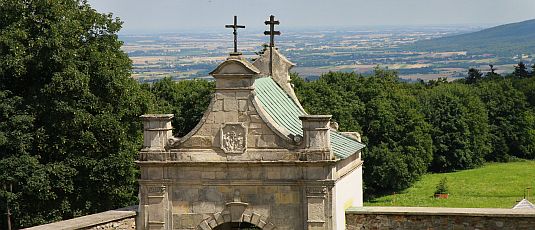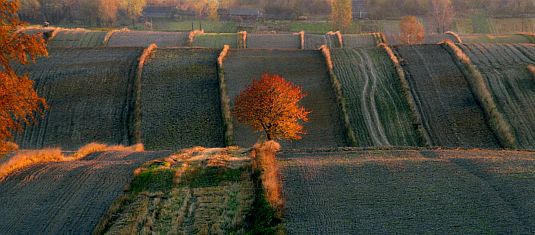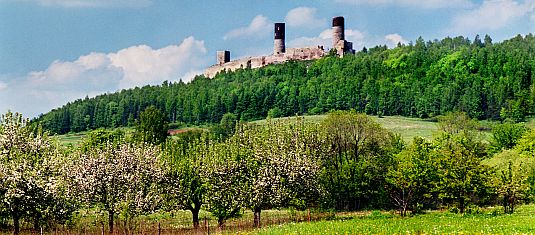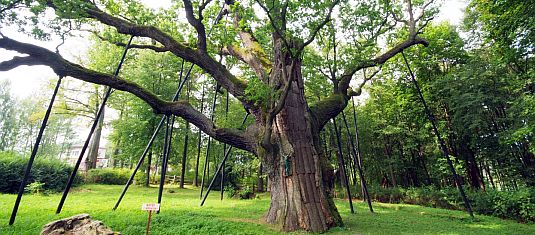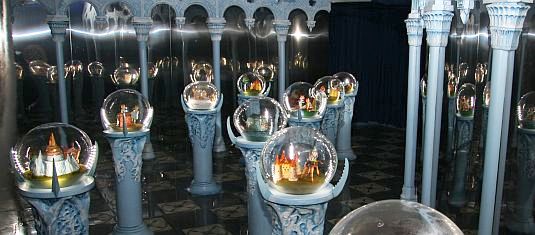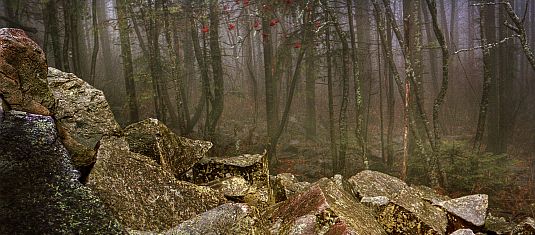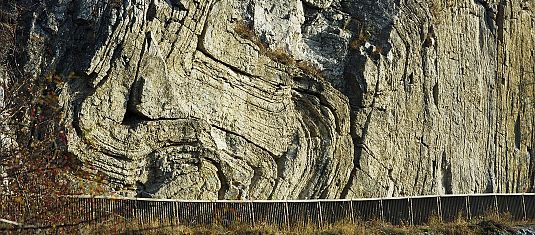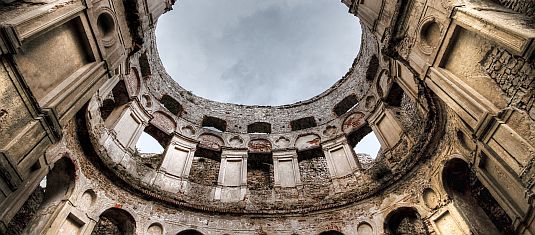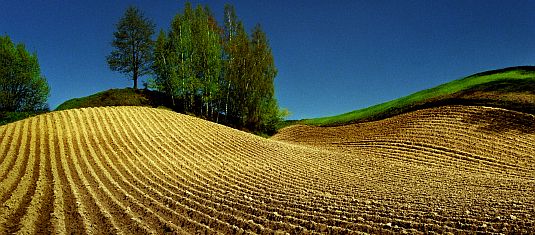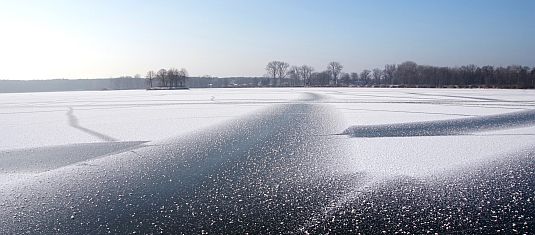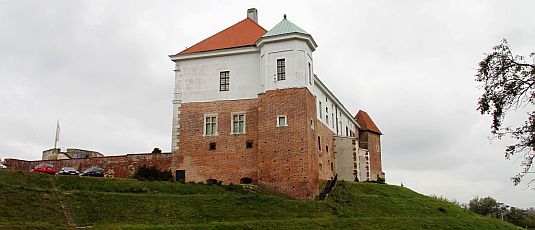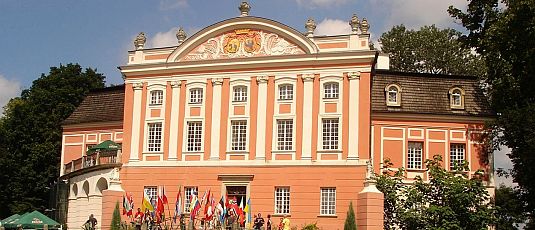St. Martin’s Collegiate is an immense building with a mysterious history. Some fragments of the structure are as old as the 12th C. It is uncertain who actually founded the temple, there are even some fantastic theories connecting it with the Templars, but most probably its founder was one of the Dukes of Sandomierz – either Kazimierz Sprawiedliwy (Casimir II the Just) or Henryk Sandomierski (Henry of Sandomierz). St. Martin’s Church was built of flinty sandstone blocks, it has a form of a three-nave ceiling basilica with a transept, three-apse ending on the eastern side and a western two-tower edifice, where there is an empora. In the 12th C., between the towers, there had been a vestibule with a barrel vaulting supported by buttresses, yet it was taken down in the 15th C. Although the Opatów collegiate has original outline, the structure itself was several times rebuilt. The facade has preserved its Romanesque shape (the branches of the western portal, which initially was more expanded, had been deconstructed already in the Middle Ages), only the window above the portal was enlarged. Here, one can find beautiful friezes with floral and animal motifs. The church towers have three levels of biforia (windows divided by columns) and Baroque roofing. Although in the 16th C. the transept and presbytery were topped with Gothic pinnacles, the walls were elevated and the windows relocated, the shape of the building has remained unchanged.
The inside of the church is covered with Baroque polychromes from the 18th C. There are also some wall-paintings depicting historic battle-scenes, i.e. on the right one can see “The Battle of Psie Pole” (“Bitwa na Psim Polu”) and on the left “The Battle of Grunwald” (“Bitwa pod Grunwaldem”) – the latter took place in 1410 and was a spectacular triumph of king Władysław Jagiełło’s army over the Teutonic Order. In the northern part there is also “The Battle of Viena” (“Bitwa pod Wiedniem”). Over the arcades, the walls of the main nave are covered with numerous allegorical scenes, while on the vaulting there are scenes from St. Martin’s life. The furnishing of the temple comes from the 18th C. In the altar, on the extension of the right-side, southern nave there is a 16th –century painting of the Virgin Mary with the Child, which supposedly was painted by an Italian artist Timoteo Viti from Urbino. In the transept on the left-side, northern nave there is a Reneissance tomb of the Szydłowiecki family: the Great Crown Chancellor Krzysztof Szydłowiecki and his son Zygmunt. Beneath the relief of the lying chancellor in armour (a traditional post-mortem depiction of the noblemen), there is a relief of “Lament Opatowski” (“The Opatów Lament”) which is a Renaissance masterpiece and an example of the Polish craftsmen artistry. It depicts 41 characters mourning the death of Chancellor Krzysztof Szydłowiecki - the owner of Opatów and the collegiate restorer. Among them there are country dignitaries, courtiers, musicians, singers, members of the Szydłowiecki family and even king Zygmunt Stary (Sigismund I the Old). The relief comes probably from 1541.
Another Renaissance relic is the wooden ceiling of the choir, decorated with coffering and polychromes. Apart from those, there are other valuable works of art: a regency monstrance from ca. 1730, two 18th-century Baroque chalices (one of them plain with a paten), a Rococo cross-shaped reliquary with Odrowąż, Jastrzębiec, Łabędź and Sulima coats of arms, Renaissance chasubles – one from the 16th C. and one embroidered in a floral pattern from 1741.
In the library, which is the collegiate archive, there are historic documents, manuscripts, incunabula and old prints, e.g.: an act of purchasing Opatów by Krzysztof Szydłowiecki from the Lubuskie bishops in 1514, called “Przywilej Opatowki” (“The Opatów Privilege”), given to the collegiate by Krzysztof Szydłowiecki in 1519 in the form of a parchment with miniatures made by Stanisław Samostrzelnik. Unfortunately, the archives is has been severely deteriorated by mould.
The Opatów Collegiate is a real attraction not only for the connoisseurs of art, but also for all sight-seeing enthusiasts.


